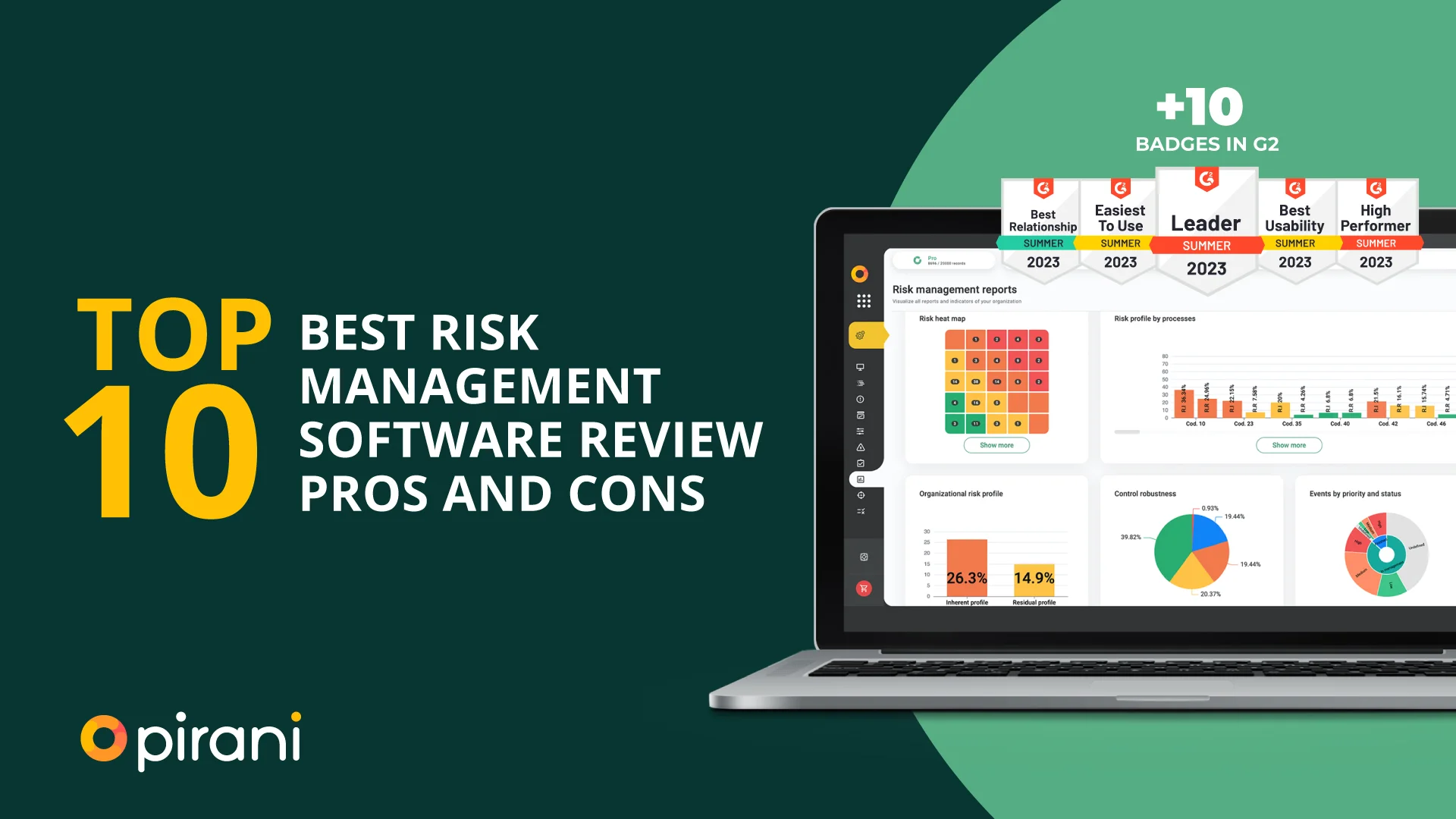General Electric and Risk Management Failures: A Case Study

General Electric is a multinational corporation globally recognized for manufacturing and fabricating home appliances, technologies, aviation, engines, power generation, gas, etc. Their broad portfolio also includes equity investment, and for a company that has it all and with over 131 years of founding, they have the experience and resources to manage financial risk correctly.
However, by 2018, the scandal shocked shareholders and investors of this multinational, with a steep drop in share value of more than 70%.
Today, we explain the General Electric risk management case study, what the risk management teams did not see, what events generated the fall, the consequences they faced, and how financial losses could have been avoided.
Let's get started!
What does General Electric Company do?
General Electric is an American company founded in April 1892 by Thomas Alva Edison, J.P. Morgan, Charles Coffin, Edwin Houston, and Elihu Thomson, originally dedicated to the electrical sector. As its slogan said, "We bring good things to life." The company changed people's lifestyles, and in most American homes and around the world, you could find items created by this company, from light bulbs, lamps, refrigerators, toasters, microwaves, and many others.
Over time, GE diversified its portfolio by acquiring multiple patents, and today, it is a multinational conglomerate of technological infrastructure and numerous financial services with a presence in more than 100 countries. General Electric offers various products and services, including electrical distribution, home appliances, electric motors, gas, locomotives, software, petroleum, aviation, and insurance.
This ability to cover multiple industries led it to position itself as the fifth-largest company in the world and the 14th most profitable in 2011. This context allows us to understand why acquiring GE company shares attracted stock market investors. Still, they should have counted on the fact that there were flaws in the profitability figures they received.
Let's see what went wrong!
General Electric scandal: Accountant mismanagement
By 2018, the Securities and Exchange Commission surprised investors by announcing that GE's share price had fallen by 76% of its value due to the deterioration of its energy and insurance businesses.
To understand how this multinational reached this critical point, let's look at the events and risks they failed to manage, ultimately generating the decline in this risk management case study.
Insurance business decline
For 2018, GE's insurance business reported severe financial losses of $6.2 billion. This division provided insurance to nursing homes and assisted living facilities. However, rising healthcare costs and extended life expectancy resulted in substantial losses for the business.
Reduced cost estimates
In 2017, General Electric presented investors with earnings estimates for 2015 and the first two quarters of 2017, which projected a substantial increase in annual revenue. However, the company omitted critical drivers of that purported increase in profitability, which stemmed not from increased demand for insurance policies but from a substantial reduction in projected costs.
Hiding of insider sales
GE and its management should have informed investors about a significant acquisition of the company, which inflated its value. The company conducted an internal sale of receivables between GE Power and GE capital, so the figures reflected future years' cash.
Lack of transparency
When companies list their shares on the stock exchange, they commit to providing truthful and accurate information about their operations and the results each of them has; this ensures the reliability of the values at which their shares are set. However, in the case of GE, the accounting team deliberately presented information about expected growth, which motivated investors to buy. In addition, it concealed rising claims costs from policyholders and the injection of funds of an undeclared nature.
Repeated Failures and Violation of Anti-Fraud Policies
GE's conduct was directly contrary to disclosure policies and laws, accounting controls, and those provided by securities law. Continued failures to disclose information about GE's energy and insurance financial status, including failure to disclose the nature of the $2.5 billion in cash from the energy business.
Find out what GE had to deal with when it all came to light!
Consequences of Poor Financial Risk Management
A 200 million fine.
After a lengthy investigation for more than three years by the Security and Exchange Commission (SEC), the regulatory agency ordered GE company to pay a fine of 200 million dollars and to dismantle its empire to pay the amount owed.
Note: Although it promised to pay the fine, GE never admitted responsibility for the accounting reports.
A company without a leader.
At the time of the General Electric scandal, the company was headed by Jeff Immelt, who, after more than 16 years, had to resign from his position and was replaced by John Flannery. However, after only one year at the head of the company, Flannery was dismissed, and Larry Culp arrived, who had to deal with the consequences of the disaster.
Financial losses that meant the end
The insurance division finally had to write off 9.5 billion dollars in taxes and dismantle the insurance business. In addition, GE company shareholders had to inject an estimated $15 billion in capital to deal with the consequences.
How could poor financial risk management have been prevented?
Pirani: Track your risk and improve regulatory compliance.
Pirani is a risk management software that allows companies to control potential threats; with an easy-to-use and managed interface, the tool helps to optimize the identification and analysis of risks. Once potential risks have been detected, you can create risk matrices to prioritize those most likely to occur, i.e., The increased medical supplies. In addition, the software presents heat map views to prioritize risks according to their severity, which helps to focus efforts and resources.
Pirani allows direct communication across all areas and levels, as it centralizes all essential information accessible to all members. It is also a flexible option configured according to the regulations applicable to each organization to facilitate regulatory compliance. It also allows timely monitoring of the risk control measures implemented and the progress of action plans.
Prevent your company from suffering severe financial losses, suspending operations, or losing the trust of partners and customers.
Take control of your risk!
You May Also Like
These Related Stories

How Risk Management Links to Business Innovation

Key Elements of AML Risk Management

Key elements of the risk management system

What you need to know about Key Risk Indicators

Best Risk Management Software: Top 10 Reviews & Pros/Cons


No Comments Yet
Let us know what you think